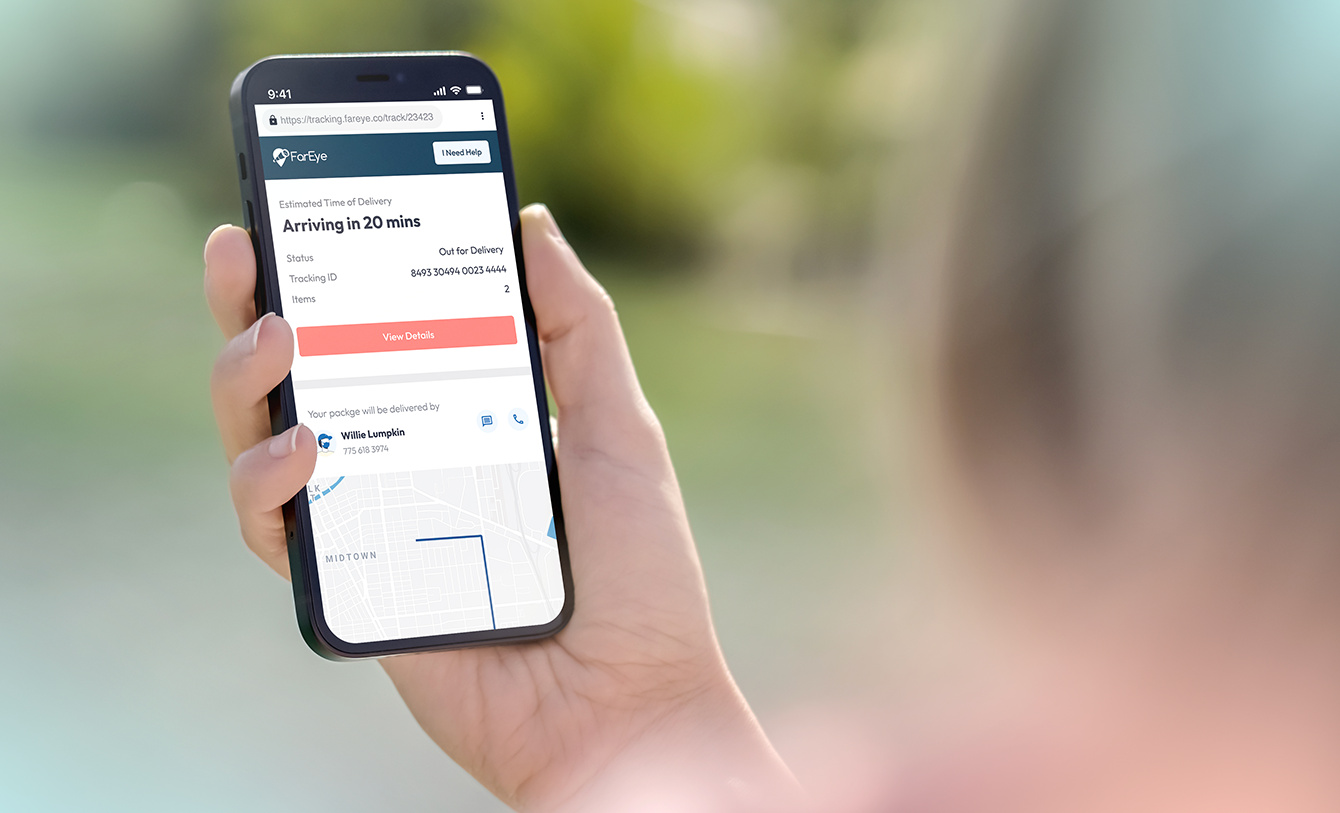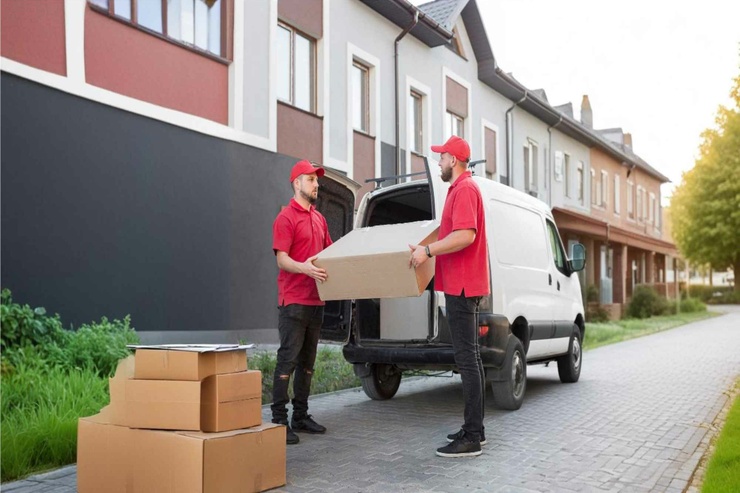- E-commerce
What is Retail Visibility? 4 Challenges and How Retail Visibility Solutions Address Them
Table of Contents
- What is Retail Visibility?
- The Significance Of Having Good Retail Visibility In Your Supply Chain Management Infrastructure
- Two Types Of Visibility Customers Require Today
- Relevance Of Retail Visibility To Customer Experience
- Problems of Retail Visibility
- Retail Visibility Solutions: How FarEye Helps in Retail Visibility
- In Conclusion

Retailing is a hypercompetitive business. And with the advent of e commerce there is pressure on retailers to ensure every inch of advantage is taken. One oft-looked advantage is – retail visibility. Understanding what it is and how to use it effectively can be the difference between thriving or struggling to keep up with demand and competition.
This blog post will focus on defining retail visibility, importance of retail visibility within supply chain management systems, what customers want in terms of visibility today, and how it helps improve customer experience. We’ll also turn the spotlight on the challenges faced when trying to attain complete visibility.
What is Retail Visibility?
Retail visibility refers to the ability to track goods from where they are produced all along the supply chain until they get sold out in stores or other outlets. It involves knowing different things like level of stocks available, product location and shipment status among others. Basically, it gives sellers real-time information which they can act upon so as make right choices while running their enterprises thereby cutting on costs incurred due wrong decisions made without sufficient data about what is happening around them.
The Significance Of Having Good Retail Visibility In Your Supply Chain Management Infrastructure
Good visibility is a necessary component for effective supply chain management infrastructure. It provides timely access into relevant stock levels held by retailers thus facilitating optimization efforts aimed at preventing overstocks or stockouts. Moreover, such efficiencies not only lead to cost savings but also increase flexibility across entire chains.
When there is better information sharing and transparency between different parties in the supply chain, it leads to increased product knowledge. This allows for more accurate demand forecasting. Accurate forecasts help ensure the right products are available when needed.
Reduced Wastage and Storage Costs
With enhanced transparency, there is less uncertainty in the supply chain. This enables companies to make better decisions to minimize wastage and storage costs.
Two Types Of Visibility Customers Require Today
Customers today are more knowledgeable and demanding than ever before. They require two types of visibility; product visibility and order visibility.
1. Product Visibility: Buyers want to know where exactly particular products they have interest in buying can be found. They expect detailed information about whether or not a store has stocked it as well as how many units are currently available for sale. This saves them time since no one wants to waste their time moving around from one place another looking for something that might never exist.
2. Order Visibility: Once an individual places his/her order with sellers, he/she expects full tracking details from supplier’s warehouse location through all handling points until delivered right into their hands at doorstep. Customers today demand live updates on estimated delivery times with reasons behind any time changes made during transit stage thus enabling them plan accordingly based on this knowledge besides preventing unnecessary complaints regarding status updates which could have been easily avoided had business provided such vital details earlier on while still being processed internally by different departments involved in executing order fulfillment process.

Relevance Of Retail Visibility To Customer Experience
The importance of visibility in retail cannot be overstated when it comes to customer experience enhancement strategies. Convenience and speed have become very critical in today’s world where everything needs to happen quickly without any delays whatsoever. Retailers should therefore ensure that they offer seamless interaction points with buyers who should always get what they want whenever they need it without having anything hidden from them along their journey towards making purchase decisions.
According to a recent study conducted by McKinsey & Company, 73% of respondents said that if an organization fails meeting its promised delivery date/time then those customers would switch brands immediately due lack trust hence positive WOM also becomes impossible because people talk good things about businesses only after experiencing excellent service provision beyond customer expectations which creates loyalty among shoppers who eventually keep coming back again and again.
Additionally, visibility helps with making shopping experiences more personal. Retailers can match their products and marketing strategies to specific customers’ preferences and buying behavior by using detailed information about them. Personalized recommendations and targeted promotions make the shopping experience better, as well as drive sales up.
Problems of Retail Visibility
As it turns out, achieving complete visibility is not easy at all. There are several factors that can disrupt the smooth flow of information across a supply chain:
1. Data Silos: Different systems used by many retailers do not communicate properly with each other. This means that there are separate databases which do not show complete information about inventory or shipments because they cannot be merged together.
2. Inaccurate Data: For visibility to work correctly, accurate and up-to-date data is needed. If the information is wrong (due to manual mistakes or outdated technology), then levels of stock will be incorrect too; this leads to poor decisions being made.
3. Complex Supply Chains: Nowadays, supply chains involve many parties such as suppliers/manufacturers/logistics providers/retailers etc.; therefore sharing accurate data between these entities becomes very hard indeed!
4. Technological Limitations: Some retailers lack advanced real-time tracking solutions for visibility. Investing in them may take much money and time.
Retail Visibility Solutions: How FarEye Helps in Retail Visibility
To address these difficulties, some companies offer sophisticated solutions for retail visibility. One of them is FarEye which provides comprehensive supply chain visibility solutions tailored specifically for retailers.
Unified Platform: FarEye’s software integrates all existing systems into one platform thereby eliminating any need for additional hardware or software installations while getting rid of data silos at the same time too! By doing so it ensures that everyone sees everything thus giving a holistic view over stocks and orders throughout an organization.
Real-Time Tracking: With FarEye’s retail visibility solutions, customers get access to their orders’ tracking info updated live. This feature improves user satisfaction by keeping them informed about order statuses and possible delays in delivery.
Predictive Analytics: Using FarEye retail visibility solution, retailers can forecast future demand much more precisely thanks to predictive analytics. It enables them analyze historical data find patterns predict stock levels accurately thus optimizing inventory management process.
Automated Processes: Another benefit of using FarEye’s retail visibility solution is process automation which eliminates errors caused by manual labor while increasing overall efficiency as well.
Scalability: The capability of FarEye’s retail visibility solution to scale up with expanding businesses ensures that customer expectations are met even when operations become complex over time.
Enhanced Collaboration: All stakeholders involved in a supply chain can work better together if they have access to shared information. This is what exactly provided by FarEye through its centralized platform where everyone communicates from one place having same understanding reducing misunderstandings and delays.

In Conclusion
The importance of visibility in retail cannot be overstated in today’s highly competitive market environment for success within the industry. It streamlines business operations, cuts costs, boosts customer loyalty by offering personalized services based on individual needs while also providing transparency into each step along the way right from manufacturer till point of sale.
However achieving this goal may not always come easy due various challenges faced namely lack integration among different systems used inaccurate reporting tools employed outdated technology manual intervention etc.; but all these obstacles could still be overcome through adoption advanced solutions such as those offered by FarEye which will help achieve seamless supply chains characterized efficient service delivery system that takes care of end user requirements at minimal cost implications.
Therefore it is worth noting that investing more on stores’ visuality can earn trust from clients ,improve efficiency levels and increase competitiveness .With continuous changes occurring within this sector; businesses should prioritize their efforts towards enhancing awareness about products available hence enabling them remain relevant throughout various seasons thus becoming market leaders over time

Komal Puri is a seasoned professional in the logistics and supply chain industry. As the AVP of Marketing and a subject matter expert at FarEye, she has been instrumental in shaping the industry narrative for the past decade. Her expertise and insights have earned her numerous awards and recognition. Komal’s writings reflect her deep understanding of the industry, offering valuable insights and thought leadership.
Let's Talk to Our Experts and Optimize Your Deliveries Today!
An expert from our team will reach out within 24 hours


